Push-ups are one of the most popular strengthening exercises. They are an easy upper-body exercise that does not require expensive equipment.
Push-ups can be modified to increase strength and endurance. It is used in youth fitness programs, general fitness programs, and military training.
You can do push-ups anywhere, and best of all, they require no expensive equipment or annual gym fees. There are many variations of push-ups that can be used.
Hand placement during a push-up alters the muscle focus and may affect the number of repetitions you can perform.
There are three main variations of push that will be discussed.
- Regular Push Up
- Close Grip Push-Up
- Wide Grip Push-Up
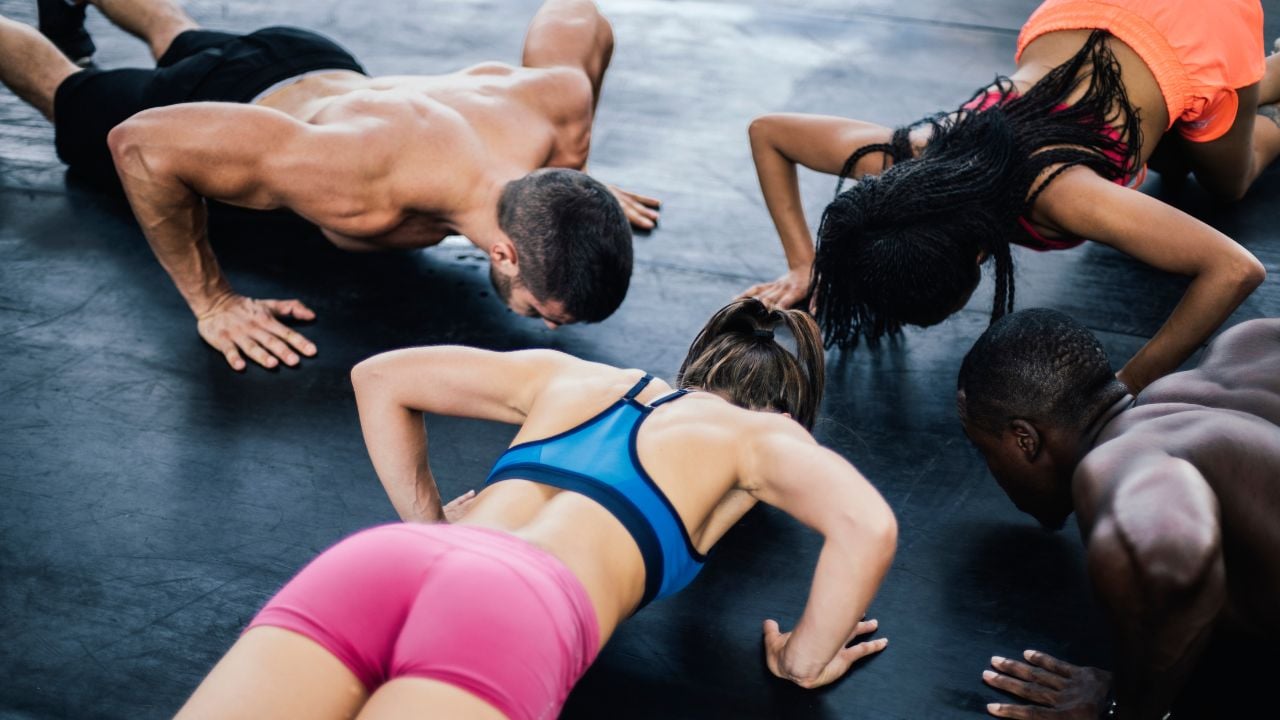
- Type Of Push-Ups
- Muscles Worked During Regular, Close & Wide Grip Push up
- Standard Push Up Vs Close Push Up Vs Wide Push Up
- Regular Push-Ups Exercise Guide
- Normal Push Up Muscles Worked
- How To Do Standard Push-Ups
- Even More Modifications Of Standard Push-Ups
- Close Grip Push-Up Exercise Guide
- Close Push Up Muscles Worked
- How To Do Close-Hand Push Up
- Close Hand Push Up Variation And Modification
- Wide Push-Up Exercise Guide
- Wide Grip Muscles Worked
- How To Do Wide Push-Ups
- Wide Push Up Variation And Modification
- Training Tips And Techniques For Standard, Close And Wide Pushups
- People Also Asked
- Which Type Of Push-up Should You Do?
- Does Close Grip Push-Ups Work Tricep Chest
- What Do Wide Push Ups Work
- Takeaways
- Reference
Type Of Push-Ups
Push-ups can be performed with a multitude of variations to bring about different muscular recruitment patterns.
These variations most often involve altering hand positions, which impacts muscle recruitment patterns and joint stresses.
A number of potential hand positions exist, the most common classifications include wide base (150% shoulder width), normal base (shoulder width), and narrow base (50% shoulder width).
- The wide base activates the pectoralis major to a greater degree than the other positions,
- whereas, the narrow base optimizes the activation of the triceps brachii.
Muscles Worked During Regular, Close & Wide Grip Push up
The muscle activation of push-ups is typically examined through variations in hand placement, such as normal push-ups, and close, and wide-grip hand push-ups.
These different types of push-ups can be used in fitness settings to change up the program and offer a range of medium to high-intensity options.
All three variations of the normal, close, and wide push-up use your chest, triceps, shoulders, and core muscles.
- Standard Push-ups are a compound strength-training exercise. They are effective in training the chest, shoulder and tricep.
- However, because of the close-hand position, the close-grip push-up works your tricep and inner chest more.
- On the other hand, The wide grip push-up works the outer chest and front shoulders (delts) more than the regular or close push-up variation.
Want to take your gains to the next level? Discover your daily calorie needs with our free TDEE calculator.
Standard Push Up Vs Close Push Up Vs Wide Push Up
It is a question on all of our minds. What is the difference between a regular push-up, a close grip and a wide push-up?
In a regular push-up, you have your hands fairly far apart, and they rest just outside your shoulders. During standard push-ups, there is greater activation of the pectoralis muscles than the triceps brachii.
During close-grip push-ups, your hands should be closer to each other and directly under your chest. It increases activation of the triceps and inner chest muscles more than a regular push-up. This means that, while individuals consider the narrow push-up to be a tricep-predominant exercise.
The increase in triceps activity in this workout is due to the narrower position of the hands, which places a heavier load on the triceps. This is evidenced by a study that found that there is greater electromyographic (EMG) activity in the triceps brachii when doing close push-ups as compared to when executing regular push-ups.
Wide-hand push-ups target your outer chest and shoulder muscles more than standard push-ups because you have to place your hands further apart.

To Stay Motivated: 150+ Gym Workout Motivational Quotes To Stay Fit
Regular Push-Ups Exercise Guide
Standard push-ups are the popular types of push-ups that build your entire upper body, shoulders, chest, and arms.
Check how to do them correctly and blast your muscles at home or at the Gym. Must add this workout to your different types of push-ups arsenal.
Normal Push Up Muscles Worked
Depending on the degree to which you perform this exercise, it will be the muscles that are worked and with greater or lesser intensity. The main muscles involved in push-ups are:
- Main muscles during regular push-ups: Chest, Anterior deltoids, and triceps.
- Secondary muscles during normal pushups: lateral deltoid, serratus, trapezius, and core muscles.
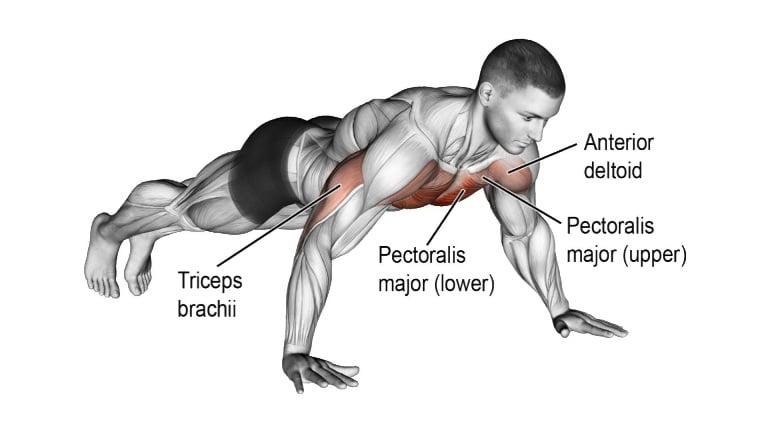
How To Do Standard Push-Ups
- Lay face down on the ground with your legs straight, and arms supporting your upper body.
- Keep your knees off the ground.
- Raise yourself off the ground, straightening your elbows and your arms.
- Raise until your elbows are locked, and pause for a moment at the top of the movement.
- Now, lower your body under slow sustained motion, feeling the motion all the way down until your chest is very close to the ground.
Even More Modifications Of Standard Push-Ups
Many of these moves can be made easier or harder with these modifications, although not every modification will work with every type of push-up.
Make It Easier
- Knees: Perform push-ups on your knees instead of your feet to ease the difficulty on your upper body. This is a great way to build up to more difficult variations.
- Incline: Elevate your hands on a bench, chair, or table—the higher above your feet, the easier.
Make It Harder
- Unilateral: Cross one ankle over the other, so only one foot is on the ground. This requires more core activation for stability.
- Decline: Elevate your feet on a box, or bench to increase the activation of the upper chest muscles and the front of the shoulders (anterior deltoids). The higher your feet, the more difficult.
- Weighted: Have a friend place a weight plate on your back for an added strength challenge.
Close Grip Push-Up Exercise Guide
Push-ups are the best Bodyweight exercise to build your entire upper body, including shoulders, chest, and arms.
Narrow Grip Push-Ups is the best exercise to build inner pec and triceps. Take a narrower push-up stance than you normally do, which is similar to a close-grip push-up that helps in building the inner chest and tricep.
Close Push Up Muscles Worked
Several muscles work together to execute the close-grip push-up.
- The primary muscle worked during narrow Push-Ups is the triceps brachii.
- The secondary muscles include the pectoralis (chest) muscles, deltoids (shoulders), and serratus anterior.
- Aside from the upper extremity muscles, close-hand push-ups in general, engage the core, glutes, hamstrings, quadriceps femoris, and calf muscles as well.

How To Do Close-Hand Push Up
- Lay face down on the ground with your legs straight, palm near, and arms supporting the upper body.
- Keep your knees off the ground. Take a narrower push-up stance than you normally would.
- Now raise yourself off the ground, straightening your elbows and your arms but keep your elbows close to your body.
- Raise until your elbows are locked, and pause for a moment at the top of the movement.
- Now lower your body under slow sustained motion, feeling the motion all the way down until your chest is very close to the ground.
Close Hand Push Up Variation And Modification
The close push-up can be adjusted according to your goals and fitness levels. There are several ways you can enjoy the benefits of narrow-grip pushups. You can do the following variations to get a full workout.
If you want to make close pushups easier, you could try placing your hands on a wall or a more inclined surface, or you could try doing close-grip knee pushups.
If you would like to increase the intensity of close pushups, you could try doing close grip decline pushups, or you could try doing them on a less stable surface, such as a stability ball.
1. Close Grip Knee Push-Up
The close Grip knee push-up is also known as a modified close push-up. It is a brilliant beginner exercise for the development of the triceps brachii.
You can do push-ups on your knees by putting your knee on the floor and bringing your hands close to your chest. When the close push-up on your knees becomes easy, graduate to performing the exercise on your hands and feet.
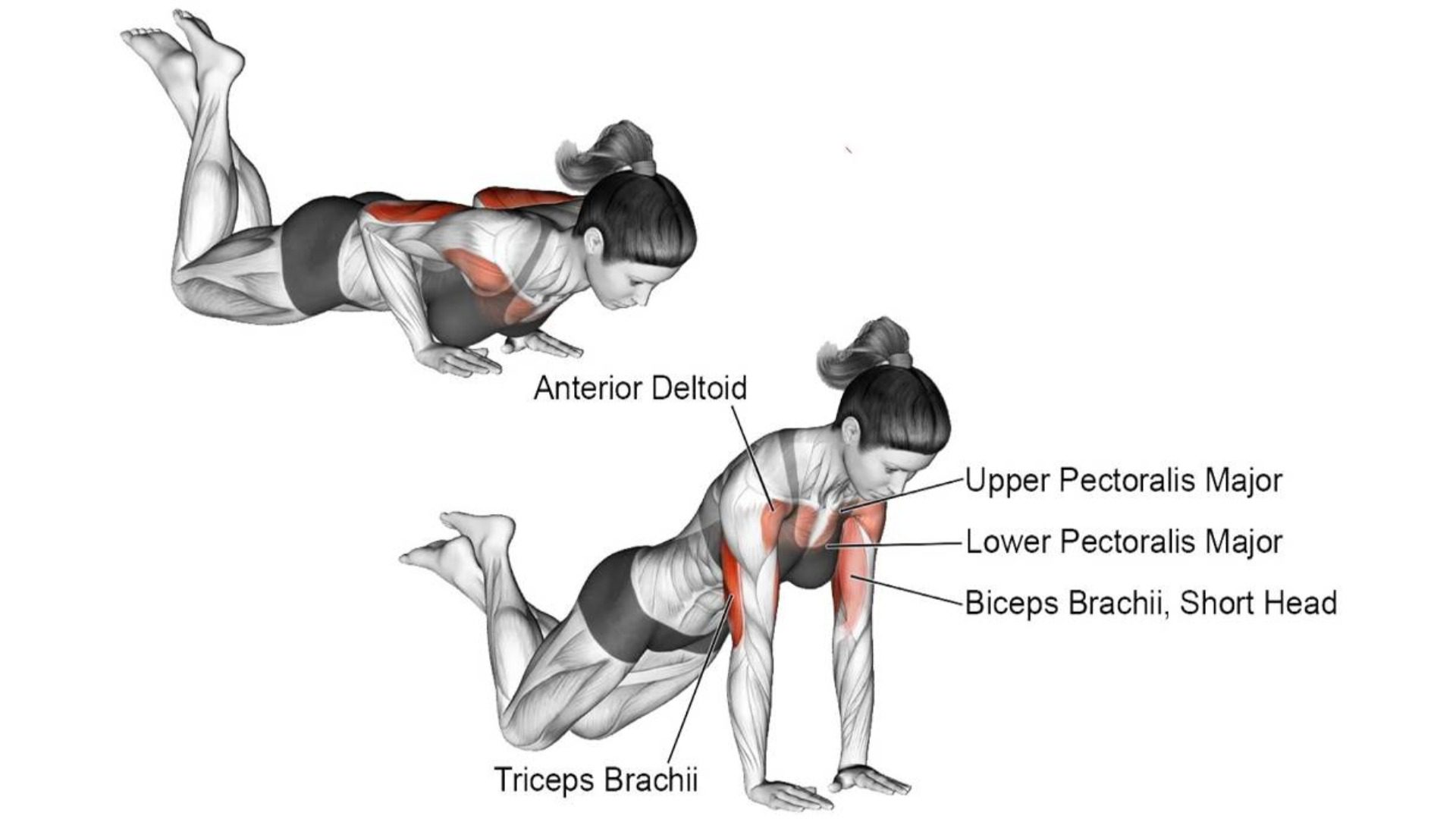
2. Close Grip Decline Push-Ups
Decline close grip Push-ups are similar to normal push-ups but with your legs on a bench.
Furthermore, your lower body is raised from the floor, and the resistance your body provides is increased compared to doing the push-up on the floor. This makes the decline close grip push-up harder than the standard narrow grip push-up.
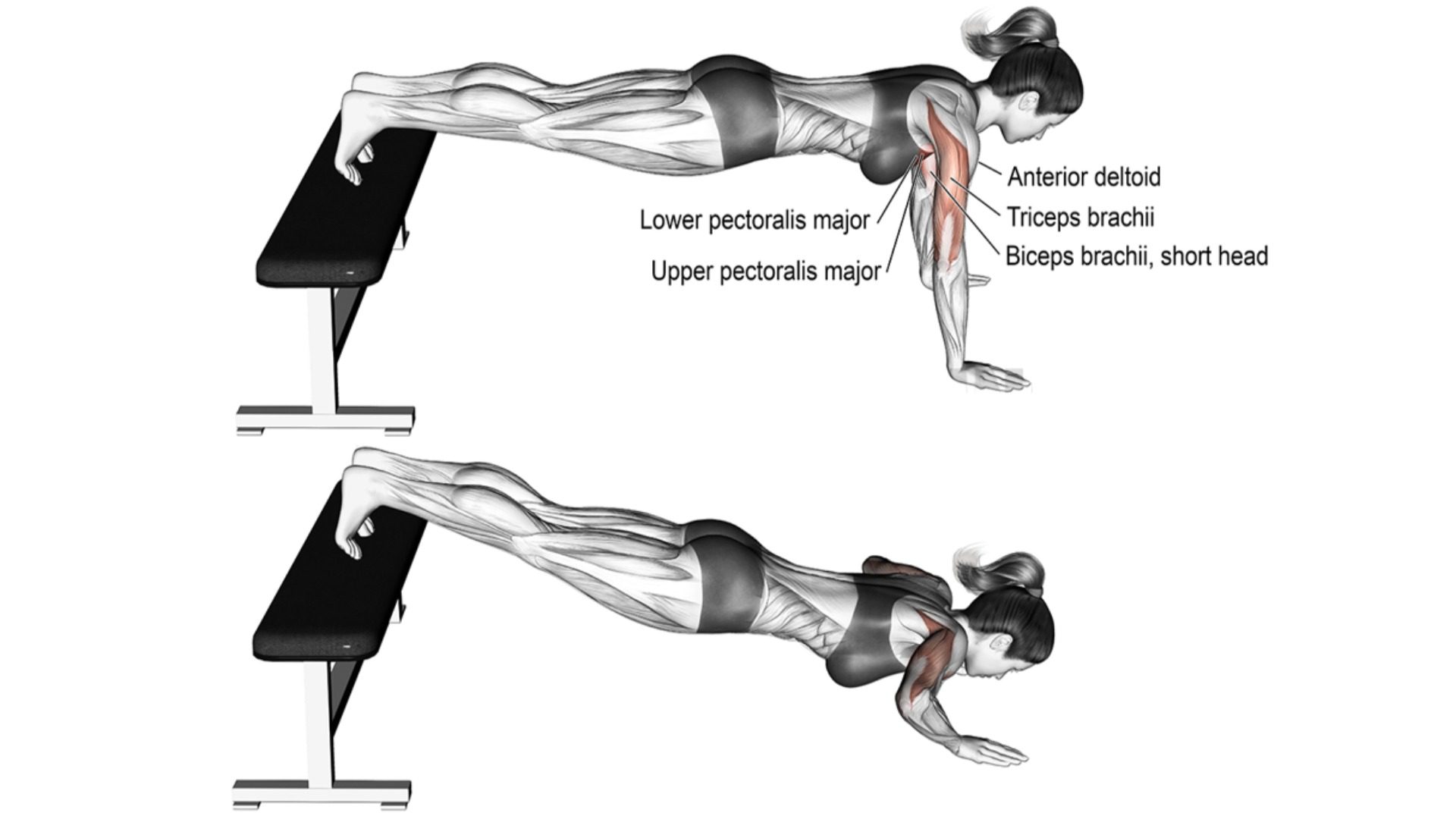
Wide Push-Up Exercise Guide
Wide pushups are a simple yet effective way to build your upper body and core strength. If you’ve mastered regular pushups and want to target your muscles a little differently, wide pushups are a good option.
Wide push-ups will stretch the chest and mainly target the outer chest. This is because the range of motion isn’t that great, and you can’t bring your arms together.
Wide Grip Muscles Worked
Several muscles work together to execute the wide-hand push-up.
- The primary muscle worked during wide Push-Ups is the pectoralis (Mainly Outer Chest)
- The secondary muscles include the muscles, deltoids (shoulders), Arms, and serratus anterior.
- Aside from the upper extremity muscles, Wide grip push-ups in general, engage the core, glutes, hamstrings, quadriceps femoris, and calf muscles as well.

How To Do Wide Push-Ups
- Lay face down on the ground with your legs straight, and arms supporting your upper body.
- Put your arms in the 90/90 push-up position.
- Slowly descend to the floor by retracting the shoulder blades and unlocking the elbows.
- Descend until the upper arms are parallel or your chest touches the floor.
- When doing push-ups, focus on the outer chest area.
- Push back to the starting point by extending the elbows and driving your palms into the floor.
Wide Push Up Variation And Modification
You can adjust the wide push-up according to your fitness level, preferences, and goals.
If you want to make wide pushups easier, place your hands on a wall or more inclined surface or do a wide-grip knee push-up.
To increase the intensity of pushups, you may want to try doing wide-grip decline pushups or try doing them on a less stable surface, such as a stability ball.
1. Incline Wide Grip Push Up
The incline-wide push-up is a simple type of push-up that dramatically reduces the pressure on the arms, upper back, and abs.
The closer you stand to the wall, the easier it is to perform, but remember, it’s still important to be aware of your body alignment as you perform this push-up. It is a great exercise for beginners to target the lower and outer chest.
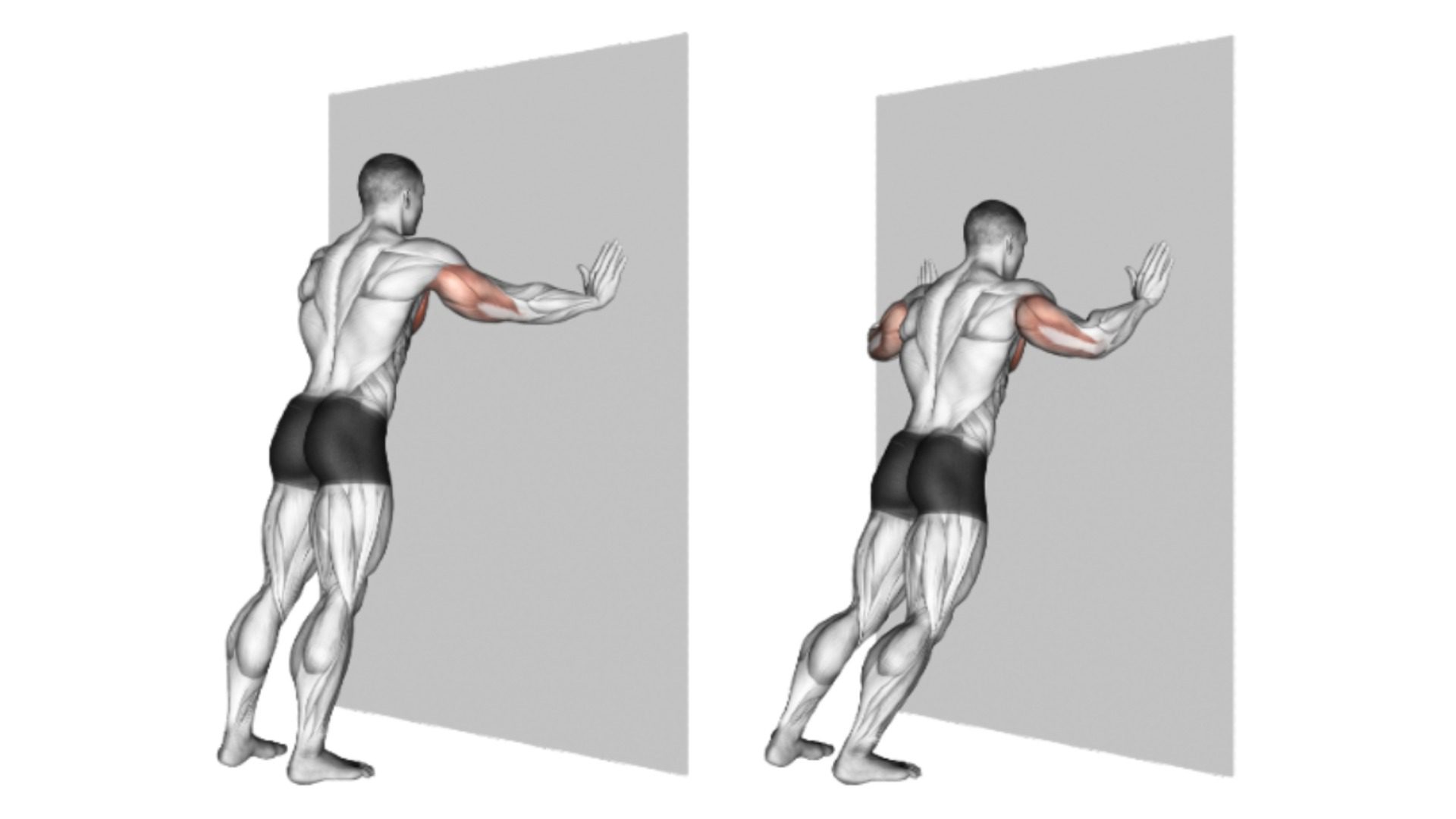
2. Wide Grip Decline Push Up
The wide grip decline push-up is an advanced variation of the wide push-up but with your feet on a bench. Although this exercise is called the wide decline push-up, it focuses more on the upper pectoral muscles and the outer portion of the chest.
Furthermore, your lower body is raised from the floor, and the resistance your body provides is increased compared to doing the push-up on the floor. This makes the wide-hand decline push-up harder than the standard push-up.
Training Tips And Techniques For Standard, Close And Wide Pushups
Follow the proper foam and techniques to get the most out of this move. Whether you’re doing traditional push-ups or a close/wide variation, you can avoid these common mistakes to prevent ruining your gains and possibly injuring yourself. When going through your push-up sets, make sure you aren’t making these errors:
- For the push-ups, begin by performing 2–3 sets of 6–8 repetitions. Add more reps and sets as you build strength.
- Choose the exercises as per your fitness levels. And also choose your sets and repetitions based on your ability to maintain good technique throughout all sets and repetitions.
- Pay extra attention to your form and emphasize quality over quantity to improve your upper-body strength.
- Your neck should be aligned with your body, not tilted up, which could strain the neck.
- When you’re in the high plank position for any push-up variant, you need to engage your glutes to make sure your spine doesn’t sag or bend.
- Slow down all of your movements and pay careful attention to your form.
- Do not stop early or perform incomplete push-ups; this will not be as effective at growing muscle and functional strength.
- To see continual progress and build body strength, incorporate proper warm-ups, rest, and nutrition into your exercise program.
- Rest for 36 to 48 hours before training the same muscle groups to allow sufficient recovery.
People Also Asked
Which Type Of Push-up Should You Do?
For a more well-rounded physique, you might consider using various push-ups.
- Standard push-ups are best for the chest, shoulder and tricep.
- Incline Push Up works more on the lower chest and back.
- The decline push-up works more on the upper chest and front shoulders.
- Pike Push-ups focus more on the shoulder than the chest and tricep.
Does Close Grip Push-Ups Work Tricep Chest
The Close push-up is one of the best pushups for the tricep and inner chest.
What Do Wide Push Ups Work
The wide push-up primarily works your outer chest and shoulder muscles.
Takeaways
Push-ups are one of the greatest general conditioning exercises for everyone. You can do them anywhere, no equipment is required.
Reference
- Youdas, J. W., Budach, B. D., Ellerbusch, J. V., Stucky, C. M., Wait, K. R., & Hollman, J. H. (2010). Comparison of Muscle-Activation Patterns During the Conventional Push-Up and Perfect· Pushup™ Exercises. The Journal of Strength and Conditioning Research, 24(12), 3352-3362. doi:10.1519/JSC.0b013e3181cc23b0
- Ebben, W. P., Wurm, B., VanderZanden, T. L., Spadavecchia, M. L., Durocher, J. J., Bickham, C. T., & Petushek, E. J. (2011). Kinetic Analysis of Several Variations of Push-Ups. The Journal of Strength & Conditioning Research, 25(10), 2891-2894
- Electromyographic comparison of modified push-up exercise

Manish brings over 10 years of hands-on experience in weight lifting and fat loss to fitness coaching. He specializes in gym-based training and has a lot of knowledge about exercise, lifting technique, biomechanics, and more.
Through “Fit Life Regime,” he generously shares the insights he’s gained over a decade in the field. His goal is to equip others with the knowledge to start their own fitness journey.
